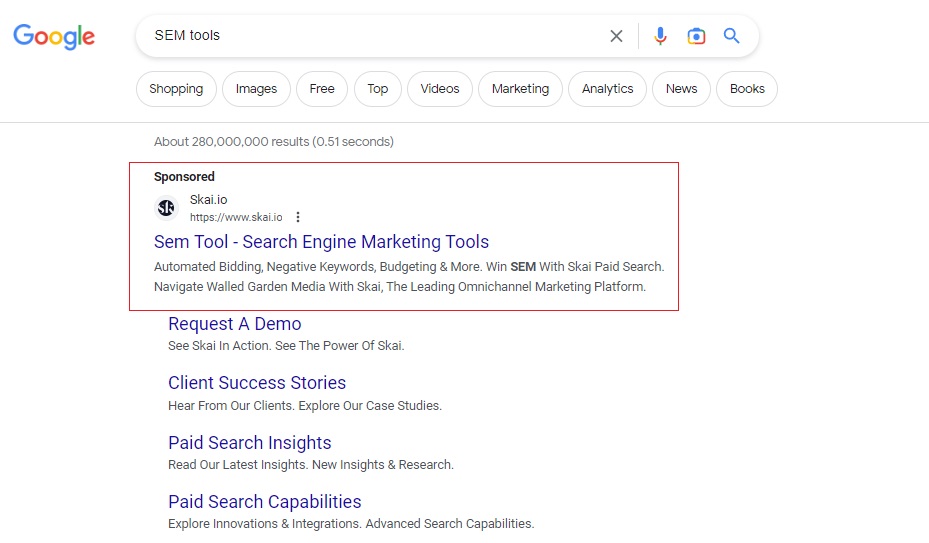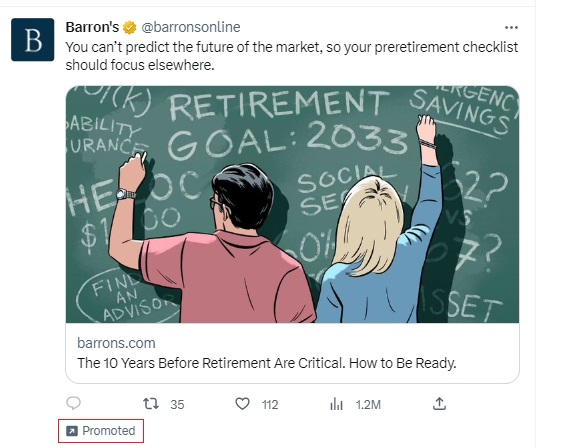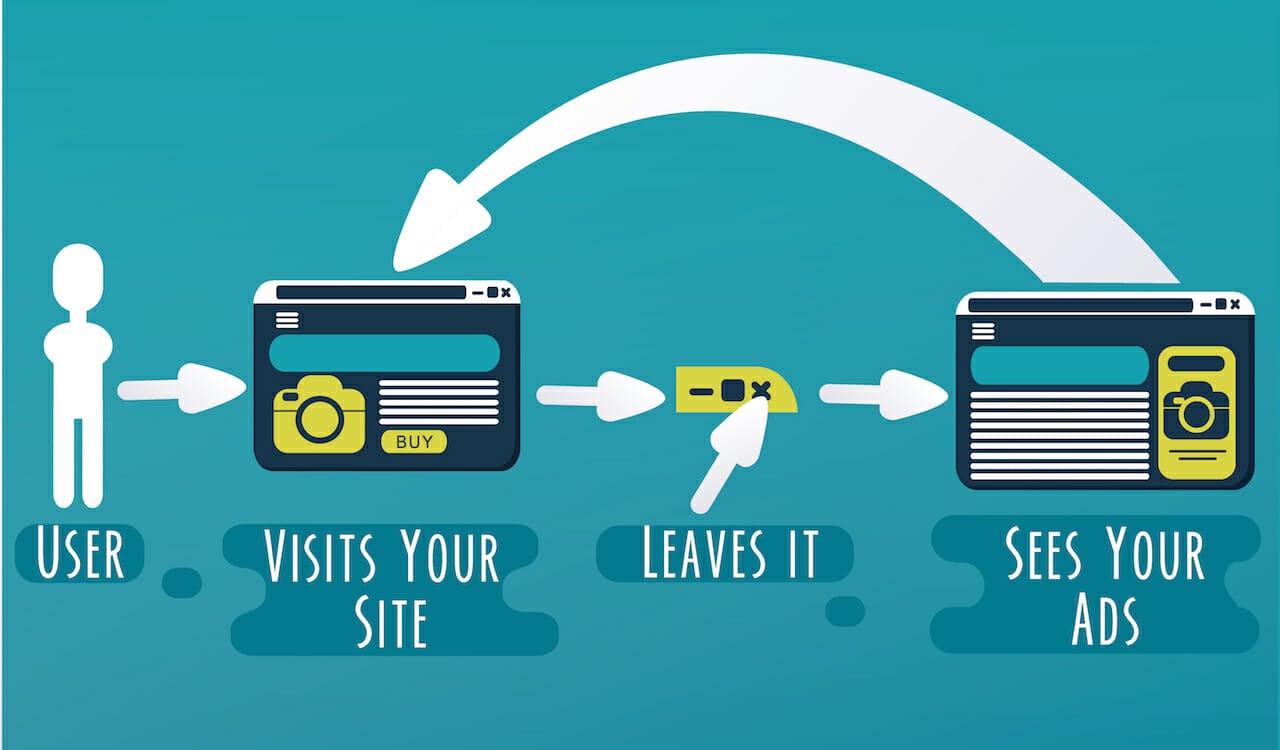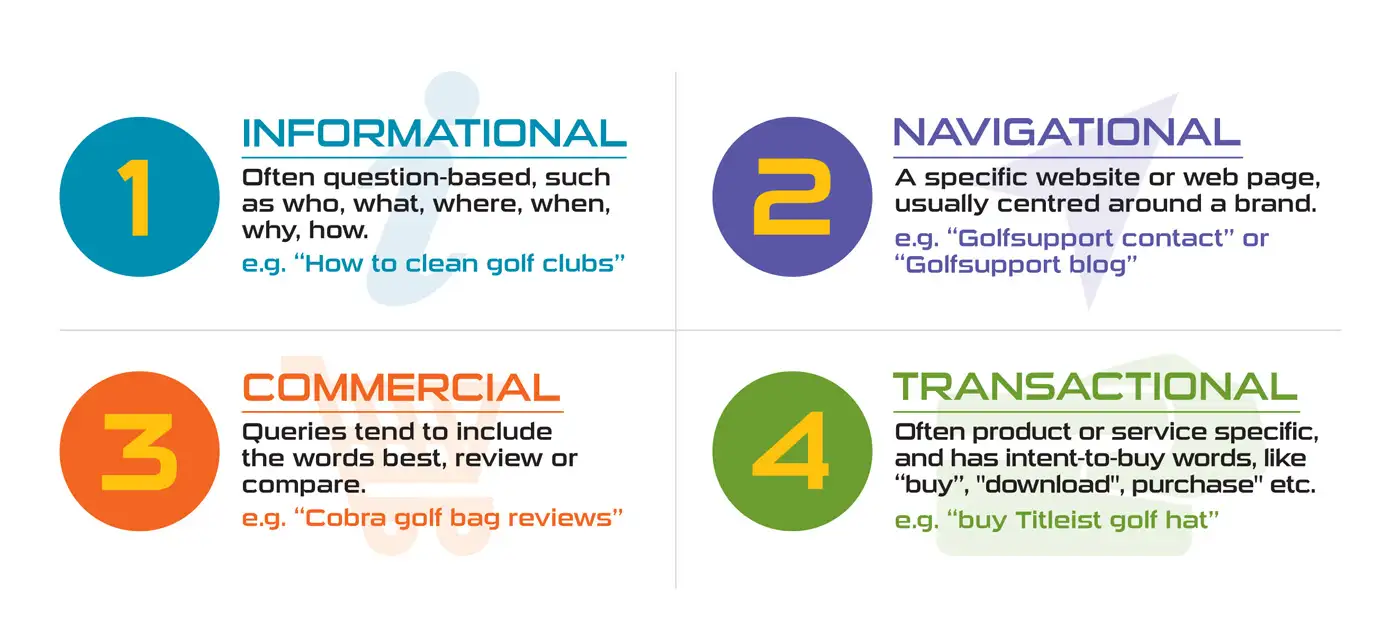It’s no secret that using paid search ads is an effective approach when targeting high-value enterprise companies.
What may be a little less clear is precisely how you do that in a way that puts your valuable resources to work generating the kind of ROI that those particular potential customers generate in the first place.
In this definitive guide to enterprise PPC, I’ll outline the strategies, solutions and approaches you’ll need to ensure that your paid media campaigns are fully optimized for lead generation and conversions.
Their expertise has helped Nextiva grow its brand and overall business
What Are Enterprise Paid Ads?
Enterprise paid ads are essential online advertisements that target large-scale, high-value companies in order to promote a brand’s products or services.
Given the enormous returns to be gained from landing such major clients via ads, it’s no surprise that enterprise advertising is generally more expensive than local PPC or traditional B2B advertising focused on small businesses.
That said, with paid ads generating roughly 50% more conversions than organic SEO efforts, they’re an option no business competing for enterprise customers can afford to be without.
Ultimately, enterprise ads come in three main types:
Search Engine Marketing (SEM)
Search engine marketing is the first thing people think of when it comes to pay-per-click advertising.
This approach involves boosting your visibility in relevant search engine results pages by paying for advertising in order to help you to attract an influx of new traffic from people who are looking for what you have to offer.
An example of SEM that you’re probably already familiar with is the Sponsored search results that take prominence over organic results when you search for something on Google:

Dive Deeper: What Is the Difference Between SEM and SEO?
Display Advertising
Display advertising involves placing ads on websites, blogs and other digital platforms:

One significant benefit of display advertising over other forms of online advertising is that you have the freedom to create ads in various formats, including images and videos. As you can imagine, this makes it an excellent choice for showcasing new products.
Social Media Advertising
As you’ve likely worked out for yourself, social media advertising is all about posting targeted ads on prime social networking platforms like Twitter, Facebook or, especially when targeting enterprise businesses, LinkedIn.

Besides the fact that you can create image- and video-based social media ads, the main benefit is that they allow you to draw on the vast amounts of user data these platforms have to really fine-tune your targeting options with pinpoint precision.
Dive Deeper: LinkedIn Ads for Enterprise B2B SaaS: The Only Guide You’ll Need
Local PPC vs. Enterprise PPC: Key Differences
If you’ve traditionally targeted local customers with your PPC campaigns, switching to paid advertising for enterprise clients may seem like a completely different ball game.
This is especially true considering that each of the following factors of PPC advertising will need a different approach.
Goals and Objectives
Local PPC campaigns may focus on driving foot traffic to a physical location or generating new bookings for service-based businesses. With enterprise PPC, your goal is more likely to be focused on boosting brand visibility and generating qualified leads.
Customer Targeting
Running a local PPC campaign typically involves targeting a specific geographical location, such as a state, city or local region. With enterprise ads, you’re often running scores of keywords on a much larger scale as you look to attract national or multinational brands.
What’s more, enterprise campaigns are more likely to reach their customers using advanced targeting methods such as retargeting and lookalike targeting:

Retargeting, similar to remarketing (the former generally uses ads, while the latter uses email), is a simple but effective strategy that involves going after users who have previously interacted with your website but didn’t convert. For example, they spent time on specific landing pages or clicked through to your pricing information, but didn’t actually make a purchase.
Meanwhile, lookalike targeting is more or less what it sounds like: targeting customers who share similar demographics and behaviors with your target audience.
Typically, this involves using marketing automation tools to analyze data from your existing client’s customer profile and using the information as the foundation for new ad campaigns targeting similar types of customers.
Dive Deeper:
* The Difference Between Retargeting and Remarketing
* 8 Enterprise PPC Automation Tools to Level Up Your Ads
Budget and Resources
Given the size and scope of enterprise campaigns, they tend to require more ad spend than local PPC.
Of course, we all know that managing any marketing or advertising budget can be a challenge, which is why any business looking to attract enterprise customers will benefit from doing effective PPC keyword research to identify the type of words and phrases most likely to produce a solid return on investment.
Paid Ad Management
Although there’s a lot to consider with local campaigns, the nature of targeting decision-makers at large organizations can be a much more complex affair, often requiring PPC experts with an in-depth knowledge of the technical, creative and strategic elements of online advertising.
For this reason, enterprise-targeting businesses tend to either have entire marketing teams dedicated to managing their campaigns or outsource the whole process to a top-rated PPC agency.
3 Effective Strategies for Enterprise Advertising
In this section, we’ll discuss three effective strategies to help you leverage PPC advertising to its fullest potential and land those coveted, high-value clients.
1) Build Brand Recognition with Display Ads
One rookie mistake I often see with enterprise ads is using every type of ad for the same purpose – namely, to make an immediate conversion.
Of course, making sales is obviously the long-term game plan, but when it comes to attracting enterprise companies, display ads play a much more strategic role in getting your brand noticed in the first place.
After all, how can the decision-makers you’re targeting think about working with you if they don’t yet know you exist?
Developing this brand recognition typically requires a two-pronged approach:
- First, partnering with respectable, high-traffic industry journals to get your company in front of the right audience.
- Second, taking advantage of the Google Display Network to spread your brand message far and wide.
The goal here is simple: Make your company an unforgettable presence in the minds of your customers so that when they’re ready to invest in the kind of products or services you offer, yours is the first name that comes to mind.
2) Optimize SEM Ads for Conversions with Transactional Keywords
Transactional keywords are the words and phrases users add to their search queries when they have at least some degree of purchasing intent in mind:

Think about terms such as “best” or “highest-rated” and what they tell you about someone who uses them in their search queries. Isn’t it a safe bet to say they’re considering a particular product or service but haven’t yet decided which one?
From an enterprise standpoint, you might also want to consider search terms ending with words like “platform,” “software” or “provider.” For example:
- Using a phrase like “ad management software” indicates that users are looking for a particular solution
- Whereas using “ad management” alone may suggest that users are simply looking to learn more about the subject
The point of telling you all this is to encourage you to use these transactional search terms when creating search marketing campaigns on platforms such as Google Ads. By doing so, you’ll immediately target customers with a higher level of purchasing intent than would with more generic keywords, ultimately increasing the probability of generating more leads and sales.
Dive Deeper:
* How to Understand Searcher Intent and Use It to Boost SEO Rankings
* Why You Should Use Long-Tail Keywords in Your SEO Campaign
3) Use Negative Keywords to Weed Out Unqualified Leads
Negative keywords are those that you don’t want your paid campaigns showing up for.
For example, let’s say you’re ready to market a new SaaS platform for project collaborations. You target the keyword “collaboration software” and, before you know it, you’re appearing in the results when people type “free collaboration software” into search engines.
Sure, you might be able to justify this if you’re targeting SMBs (small and medium businesses) by offering a free trial, but not when you’re trying to land high-revenue-generating clients.
Attracting business owners looking for a free solution when you only offer a paid one to enterprise-level businesses is only going to result in wasted ad spend and a glut of unqualified leads that are likely to go nowhere.
In this example, “free” would be the negative keyword you’d want to ensure your business stays as far away from as possible.
As a SaaS solution operating in the cloud, you’d probably also want to avoid an association with terms like “desktop software” or “download” unless, of course, you’re running a specific campaign to persuade people of the merits of cloud platforms vs. desktop solutions.
The same goes for other terms and phrases such as:
- “For small businesses”
- “SMBs”
- “For startups”
- “Cheap”
- “For beginners”
- “DIY”
Naturally, every business’s negative keywords are going to be at least a little different depending on factors such as their niche, target audience and overall marketing goals.
The good news is that you can easily identify those search terms you really don’t want your brand associated with thanks to a bit of good-old fashioned keyword research, albeit in reverse.
With regular keyword research, you tap in your head term and prioritize the keywords that are most relevant to what you’re selling.
When searching for negative keywords, you simply do the opposite, picking out those terms that are least relevant and least likely to improve your conversion rates among enterprise-level customers.
You can then enter these undesirable terms into your Google Ads planner or whatever platform you’re using to manage your campaign.
Dive Deeper:
* How Zero Search Volume Keywords Can Generate a Ton of Traffic
* Enterprise SEO Keyword Tracking: 6 Best Tools to Monitor Performance
4) Focus on Bigger Picture Results
Running a successful enterprise PPC campaign isn’t the time to be hung up on the minutiae of Cost Per Click (CPC) and the performance of individual ads.
When you’re operating at this scale, it’s the results of your collective advertising efforts that are the ones to pay attention to.
Remember how we discussed the benefit of display ads earlier?
If you recall, the most significant advantage of those ads is building brand recognition, ensuring that you’re on a customers’ mind when it’s time to buy the products or services you sell.
So, just because Google Analytics isn’t showing a whole bunch of click-throughs and conversions doesn’t mean those ad formats are not adding value to your overall strategy.
It could be that although it’s a different ad, or even a different type of enterprise marketing, such as content creation, that ultimately generates a lead, it only happened because your other marketing and advertising efforts contributed significantly to influence the decision-making process.
In other words, while the usual PPC metrics certainly matter, it’s the cost value of the leads themselves that matters most.
Related Content: Should You Work with SMB Clients? Pros and Cons
Enterprise PPC Ads: Your Key Takeaways for a Successful Campaign
Enterprise advertising operates on a much bigger and more complex scale than regular PPC ads, often requiring a significant shift in how you target customers, capture their attention and convert them into qualified leads.
Focusing on effective solutions like retargeting campaigns and incorporating transactional keywords into your ad copy can undoubtedly help maximize the return on investment you get from your ads. But before you so much as even think about signing up for a Google Ads account, your priority should be to ensure that you and your sales and marketing teams are armed and ready with a solid ad management strategy in place.
If you’re ready to grow your enterprise with PPC ads, Single Grain’s PPC experts can help.👇


